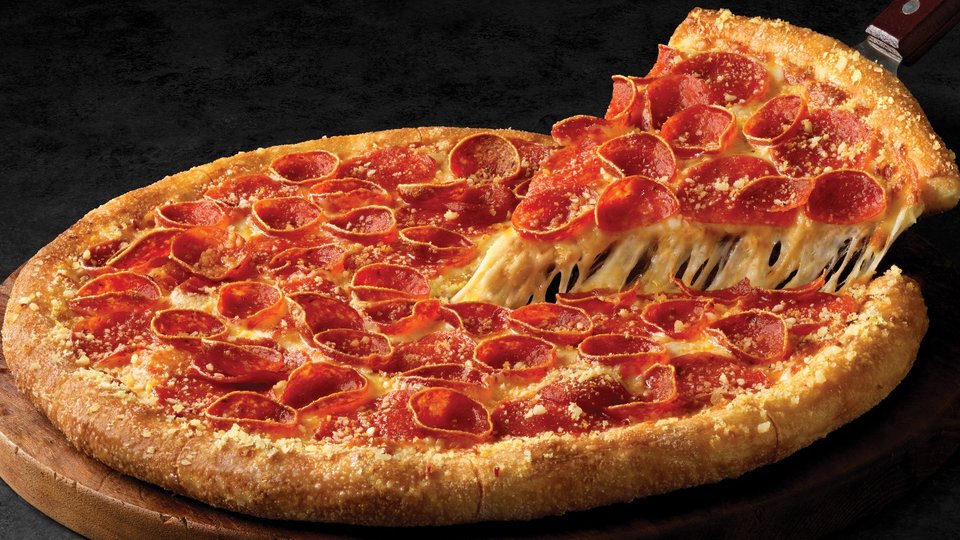Food & Beverage
Why we always pick pepperoni: the psychology behind the slice
Pepperoni is a perennial favorite in pizzerias, but do you know what's behind the slice?

August 21, 2025 by Angelin Joy — Editor and Content Lead, Cube
Pepperoni isn't just a pizza topping; it's a cultural obsession. Whether you're grabbing a slice in Manhattan or ordering late-night delivery in D.C., odds are it's topped with pepperoni. In fact, Black + Decker Pizza Pulse Survey confirms it: pepperoni has ranked as America's favorite pizza topping year after year.
So, what is it about these slightly spicy, perfectly curled discs of meat that make them so irresistible? Why do so many people bypass loaded veggies or plain cheese to go straight for pepperoni?
Let's break it down.
Flavor science: why our brains love pepperoni
Part of the answer is in the chemistry of taste. Pepperoni hits every pleasure receptor in our brains. Salty, greasy, and umami flavors with just enough spice to be fun and not obnoxious, the crispy pepperoni edges add a satisfying crunch to the gooey stretchy cheese.
Smithsonian Magazine notes that cravings for food, particularly salty, sweet or fatty foods, can happen to everyone and often occur for reasons beyond simple hunger. Triggers for specific food cravings can be environmental (such as seeing or smelling food), psychological (such as stress or boredom), or hormonal (like before/during menstruation or during pregnancy). Some cravings may arise from nutritional shortcomings, but others are a byproduct of our brain's reward system or previous associations with a specific food.
This is the heart of the psychology behind pepperoni pizza. Our brains crave fatty and salty food when we're stressed or hungry, something food scientists often refer to in the study of comfort food psychology. The sizzle of a hot pie, the aroma of the pepperoni oils mingling with cheese, and the visual appeal of the iconic red circles all trigger dopamine, the brain's pleasure chemical.
Nostalgia and the "default" effect
There's another reason pepperoni wins: nostalgia. For many, it was the first pizza topping they ever tried outside of plain cheese. Birthday parties, Friday nights, school cafeterias; pepperoni was always the crowd-pleaser, the safe bet.
This consistent exposure creates what's known in behavioral psychology as the default effect: when overwhelmed with choices, we revert to what's most familiar. A supportingstudy from the National Library of Medicine looked at how childhood food preferences often persist into adulthood, shaping our comfort food habits and flavor biases.
In moments of indecision or stress (say, scrolling late at night, hungry and half-awake), people are more likely to tap into that emotional memory and default to pepperoni.
Pop culture's favorite topping
Pepperoni doesn't just dominate menus; it dominates pop culture. From the Teenage Mutant Ninja Turtles chanting "Cowabunga!" over pepperoni slices, to sitcom characters arguing over the last piece, pepperoni has become symbolic of pizza itself.
Think F.R.I.E.N.D.S.: how many times did Joey mention pizza? Or The Office, where pizza is a recurring office treat? Add Super Bowl commercials, food challenge videos and TikTok pizza mukbangs, and you've got a media cycle that continually reinforces pepperoni's image as the ultimate pizza.
Repeated exposure means internalizing subconscious preference. It's a marketing principle that works, even when we're not aware of it.
Regional differences? Still, pepperoni dominates
Pizza preferences vary across the U.S., from thin crust in New York to deep dish in Chicago and Neapolitan-style pies in L.A. Still, across these diverse formats, pepperoni remains the most popular topping, and pepperoni pizza is the top go-to order.
Even in cities with strong local flavor preferences, pepperoni leads the charts. According to pizza delivery data from Statista, pepperoni is the number one topping in nearly every major U.S. city. Its widespread appeal breaks through regional preferences and even dietary restrictions (hello, turkey pepperoni!).
Group ordering and the psychology of consensus
When you are ordering pizza for a crowd, what would you normally go for? You would pick something that you think everyone would like. That's why pepperoni has become the default choice when it comes to group settings like offices, parties or sleepovers.
Behavioral science tells us that people tend to minimize risk in group decisions. Pepperoni is the least controversial option. It's a familiar and safe choice; a choice that is unlikely to start a debate. This decision-making shortcut ensures its continued reign.
Why pepperoni is an online favorite
Pepperoni pizza looks incredible. Those crisped, curled-up and glistening slices of meat, melted cheese, stretch, and golden crusts are the food porn that stops the scroll. Tons of slices of pepperoni that feed visual hunger appear on social media platforms, Instagram and TikTok.
According to a study published in theNational Library of Medicine, just looking at photos of appealing food can trigger our brain's reward center. In other words, seeing hot, cheesy, pepperoni-loaded pizza online actually makes you more likely to crave it and order it.
That's how visual craving loops work. Your brain files the image away, and next time you're hungry, it resurfaces. That mouthwatering shot of a sizzling hot pepperoni pie? Yeah, you'll remember it when it counts.
Pepperoni's not just a topping, It's a cue
Pepperoni pizza isn't just delicious, it's comfort food. It satisfies biological cravings, brings back comforting memories, shows up constantly in our media diets, and looks like a dream on camera. The psychology behind choosing a pepperoni pizza reveals how it satisfies our cravings, evokes memories, and holds a special spot in the tapestry of our cultural culinary identity.
So, the next time you're scanning the menu, ask yourself: Are you choosing pepperoni or is pepperoni choosing you? Either way, you're in good company.










